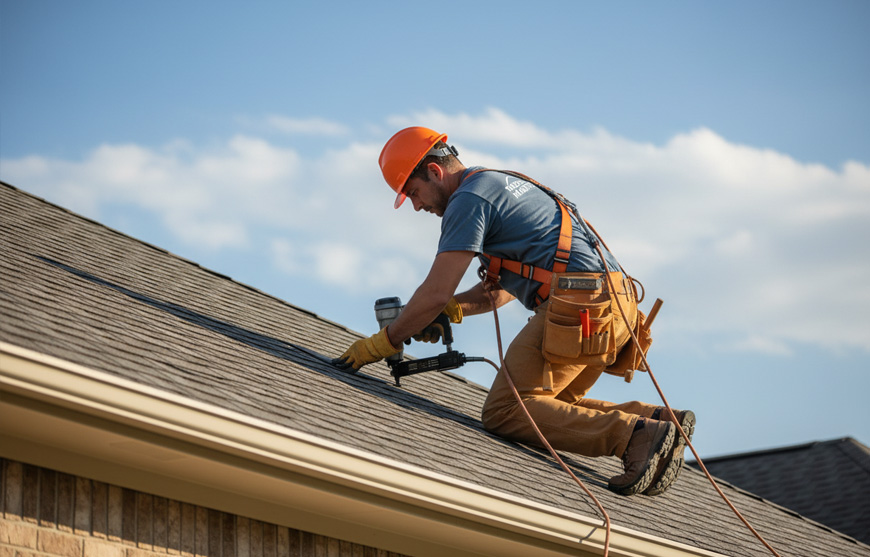Keeping your workplace safe and secure is a must. But if not properly done, it can be dangerous. In fact, maintenance and repair work is one of the leading causes of workplace injuries. According to the Occupational Safety and Health Administration (OSHA), maintenance and repair workers accounted for 23,400 nonfatal injury and illness cases involving days away from work in 2020.
There are many hazards associated with maintenance and repair work, including electrical shock, falls, and injuries from moving machinery. These hazards can lead to serious injuries or even death.
That’s why it’s important for employers to stay up-to-date on the latest OSHA guidelines for maintenance and repair. These guidelines cover a wide range of topics, from hazard communication to electrical safety. By following these guidelines, employers can help prevent injuries and accidents and keep their workers safe.
In this article, we will discuss the latest updates to OSHA guidelines for maintenance and repair and how employers can stay compliant.
Why do OSHA guidelines matter?
Before delving into the updates, it’s essential to understand why OSHA guidelines are so critical. OSHA was established to protect the well-being of workers and to ensure that employers provide safe and healthy working conditions. Failure to adhere to OSHA guidelines can lead to accidents, injuries, and costly penalties for employers.
Updates to OSHA Guidelines
OSHA regularly updates its its guidelines for maintenance and repair. Some of the most recent updates include:
Lockout/Tagout standards (29 CFR 1910.147)
The Control of Hazardous Energy (Lockout/Tagout) standard, also known as LOTO, is a procedure used to prevent accidentally energizing machines during maintenance or repair work. The standard was recently updated on January 12, 2023, and here are the key changes.
- The definition of “energy isolating device” has been expanded to include devices that control the flow of energy to a machine or piece of equipment, regardless of the type of energy. This means that employers must now lockout or tagout all energy sources that could potentially cause harm to employees.
- Employers are now required to provide additional training to employees who are authorized to use lockout/tagout procedures. This training must include the hazards associated with the equipment, the proper use of lockout/tagout devices, and the procedures for safely isolating and returning energy to the equipment.
- Temporary lockout/tagout devices are now allowed in certain circumstances, such as when testing or positioning machines or equipment. However, these devices must be used in a safe and effective manner.
Employers are now required to keep records of their lockout/tagout procedures and training. These records must be kept for at least three years.
Reference source: (CFR) Part 1910.147)
Hazard communication standard (29 CFR 1910.1200)
Hazard communication is the process of informing employees about the hazards of the chemicals they work with. The most recent updates to the Hazard Communication Standard (HCS) are still in the proposal stage.
Hazard categories: OSHA is proposing to add three new hazard categories to the GHS:
- Unstable gases: Gases that are unstable under normal conditions of temperature and pressure and may undergo a chemical reaction that could result in a sudden increase in pressure or temperature or the release of flammable, toxic, or corrosive material.
- Pyrophoric gases: Gases that can ignite spontaneously in air at a temperature of 55 degrees Celsius or below.
- Nonflammable aerosols: Aerosols that do not meet the definition of flammable aerosols.
Hazard classification: OSHA is proposing to require the classification of chemicals to include hazards associated with a change in the chemical’s physical form or resulting from a reaction with other chemicals under normal conditions of use. This would include hazards such as the formation of explosive or flammable mixtures, the release of toxic gases, or the production of corrosive materials.
Labeling: OSHA is proposing to clarify the requirements for labeling mixtures. Specifically, OSHA is proposing to require that the label of a mixture include the chemical name of each component of the mixture that is present at a concentration of 1% or greater by weight and that poses a health hazard.
Safety data sheets (SDSs): OSHA is proposing to update the format of SDSs to make them more user-friendly. Specifically, OSHA is proposing to add a new section to SDSs that would provide information on the safe handling and use of the chemical.
Employee training: OSHA is proposing to require employers to provide training to employees on the hazards of chemicals in their work area, even if the employees have received training in the past. The training would need to be updated to reflect the changes to the HCS.
These are just some of the proposed updates to the HCS. OSHA is still reviewing the proposed changes and has not yet issued a final rule. The final rule is expected to be issued in the spring of 2023.
Reference source: (29 CFR 1910.1200)
Machine Guarding Standard (29 CFR 1910.212)
Machine guarding is the use of barriers or other devices to prevent employees from coming into contact with dangerous moving parts of the machinery. Here are some of the key changes in the updated standard:
- The new section on guarding robotic work cells requires that all robotic work cells be guarded to prevent access to the point of operation and other hazardous areas. The guarding must be interlocked with the robot so that the robot cannot operate unless the guarding is in place.
- The clarification of the requirements for guarding point of operation hazards makes it clear that guards must be designed to prevent all access to the point of operation, not just accidental contact. The guards must also be made of sturdy material that can withstand the forces generated by the machine.
- The update to the requirements for guarding power transmission hazards requires that all exposed rotating parts of power transmission machinery be guarded. The guarding must be designed to prevent contact with the rotating parts, even if the guards are damaged.
- The new section on guarding laser hazards requires that all laser beams be guarded to prevent exposure to employees. The guarding must be designed to prevent the laser beam from reaching the employee’s eyes or skin.
- The update to the requirements for guarding woodworking machinery requires that all exposed saw blades be guarded. The guarding must be designed to prevent contact with the saw blade, even if the guards are damaged.
- The new section on guarding abrasive wheel machinery requires that all exposed abrasive wheels be guarded. The guarding must be designed to prevent contact with the abrasive wheel, even if the guards are damaged.
These are just some of the key changes in the updated OSHA machine guarding standard. Employers are responsible for ensuring that their machines are properly guarded in accordance with the latest standards.
Reference source: (29 CFR 1910.212)
Fall protection standard (29 CFR 1926.500)
Fall protection is the use of equipment or procedures to prevent employees from falling from a height. The most recent update to the Fall Protection standard (29 CFR 1926.500) was published in the Federal Register on January 27, 2023. The update includes the following changes:
- The new definition of “walking/working surface”. The definition of “walking/working surface” has been updated to include horizontal and vertical surfaces. This means that fall protection is now required for employees working on scaffolds, ladders, and other vertical surfaces, as well as on floors and roofs.
- New requirements for fall protection plans. Employers are now required to develop and implement fall protection plans for all workplaces where fall hazards exist. The plans must be specific to the workplace and must address the hazards and the fall protection measures that will be used to mitigate those hazards.
- New requirements for training. Employers are now required to provide training to all employees who are exposed to fall hazards. The training must be specific to the hazards and the fall protection measures that will be used.
- New requirements for inspection and maintenance. Employers are now required to inspect and maintain fall protection equipment on a regular basis. The inspections and maintenance must be conducted in accordance with the manufacturer’s instructions.
Reference source: (29 CFR 1926.500)
Electrical safety standards (29 CFR 1910.303, 1910.304, and 1910.305)
Electrical safety is the prevention of injuries caused by electrical shock or fire. Here are some of the specific changes in the 2023 updates:
- Arc-flash protective equipment: The new requirements for arc-flash protective equipment (AFE) are designed to protect workers from the thermal energy and radiant heat produced by an arc flash. The requirements specify the types of AFE that must be used, the level of protection that must be provided, and the training that must be given to workers who use AFE.
- Installation and maintenance of electrical equipment: The updated requirements for the installation and maintenance of electrical equipment are designed to prevent electrical hazards from developing. The requirements cover the installation, maintenance, and testing of electrical equipment.
- Training of electrical workers: The new requirements for the training of electrical workers are designed to ensure that workers have the knowledge and skills necessary to work safely with electrical equipment. The requirements specify the topics that must be covered in the training, the length of the training, and the frequency of the training.
- Inspection and testing of electrical equipment: The updated requirements for the
Inspection and testing of electrical equipment are designed to ensure that it is safe to use. The requirements specify the types of equipment that must be inspected and tested, the frequency of the inspections and tests, and the qualifications of the persons who conduct the inspections and tests.
The 2023 updates to the electrical safety standards are a significant step forward in protecting workers from electrical injuries. The new requirements are more stringent than the previous requirements, and they are designed to address the latest safety hazards. Employers must comply with the new requirements by January 20, 2024.
Reference source: (CFR 1910.303)
Guidance Documents from OSHA
In addition to the updates to its guidelines, OSHA also provides a number of guidance documents on maintenance and repair safety. These documents provide additional information on how to comply with the regulations and prevent accidents. Some of the most important guidance documents include:
- The OSHA Technical Manual (OTM), Section IV, Chapter 2, Section E: This document provides detailed information on the OSHA guidelines for maintenance and repair activities in the workplace. This section covers a wide range of topics, including:
- Hazards associated with maintenance and repair activities
- Engineering controls and administrative controls to prevent or mitigate these hazards
- Personal protective equipment (PPE) requirements
- Lockout/tagout procedures
- Electrical safety
- Fall protection
The OTM is a valuable resource for employers and employees who are responsible for maintenance and repair activities. It provides clear and concise guidance on how to comply with OSHA standards and regulations, and it can help prevent accidents and injuries.
- OSHA Directive CPL 2-2.45, Occupational Safety and Health Standards for Maintenance and Repair Activities, provides a summary of the OSHA guidelines for maintenance and repair activities. This directive is intended to provide employers and employees with a quick and easy reference to the most important OSHA requirements for maintenance and repair.
Employers should review these guidance documents and incorporate the recommendations into their safety programs.
Conclusion
By staying up-to-date on the latest OSHA guidelines and guidance documents, employers can help prevent accidents and injuries in the workplace. They can also demonstrate their commitment to safety to their employees by mandating regular training days to familiarize technicians with the latest changes and best practices.


